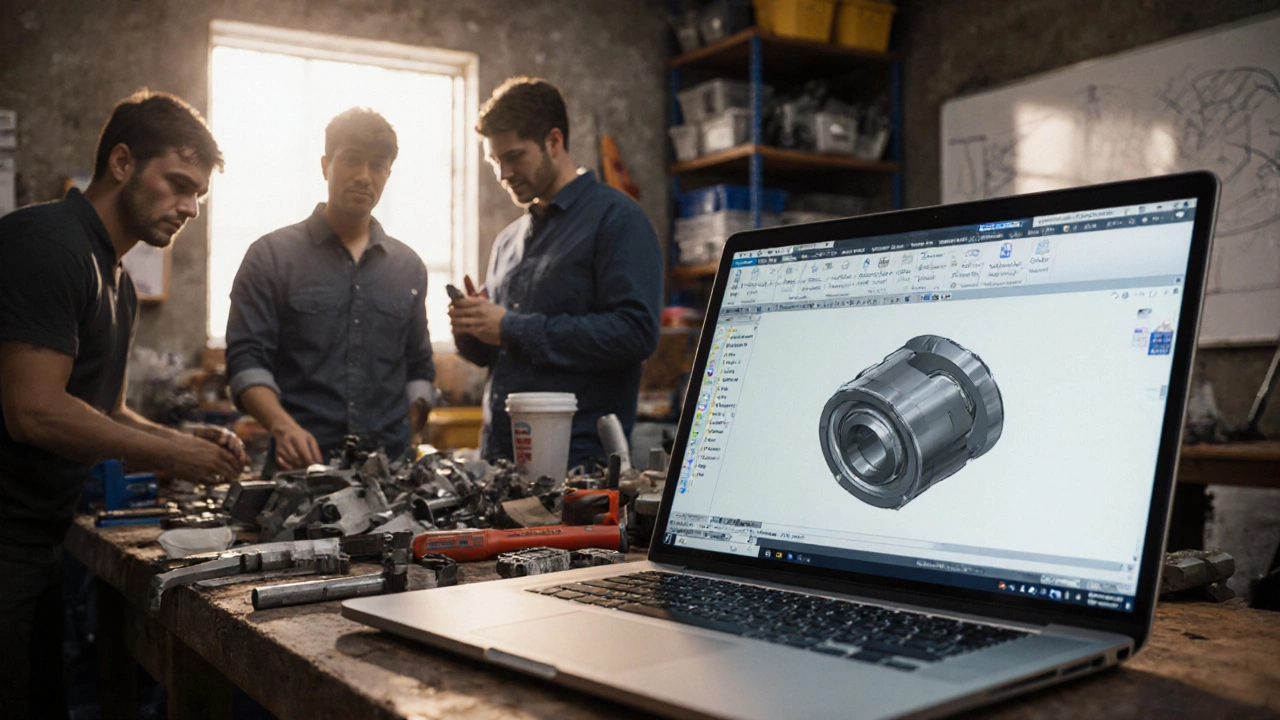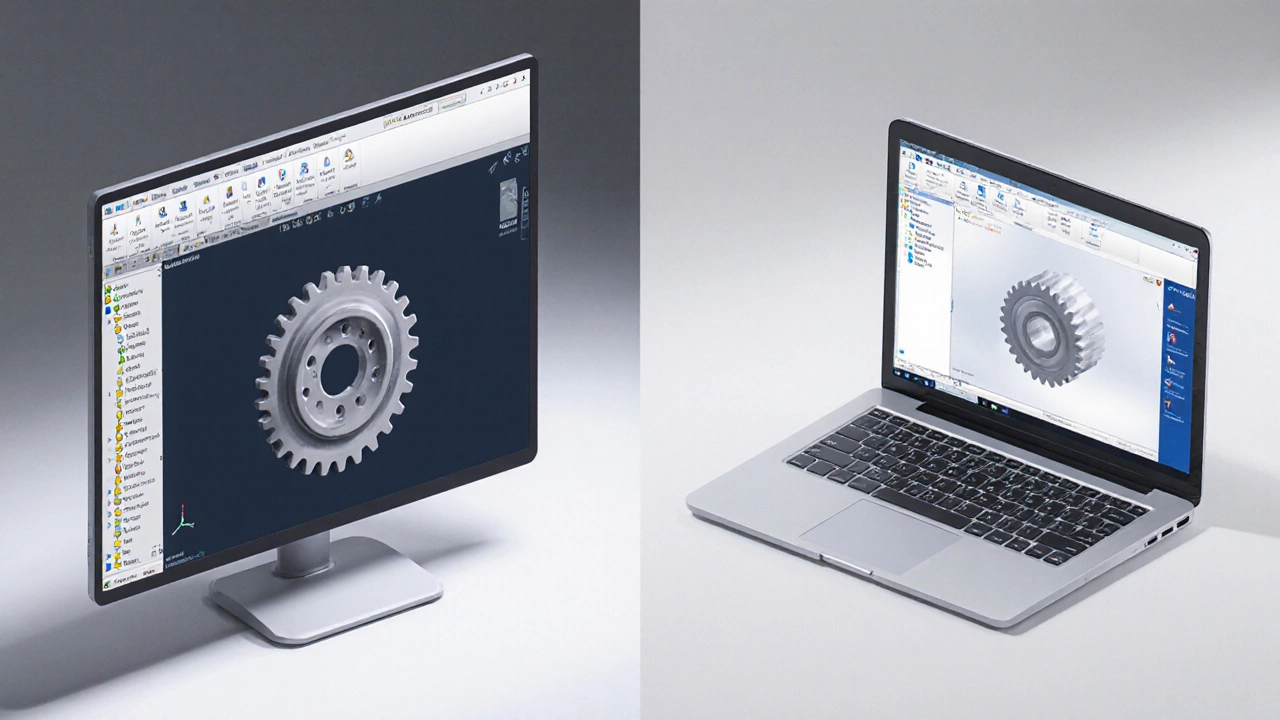
CAD Tool Decision Calculator
Which CAD Tool is Right for Your Startup?
Answer a few questions to determine which CAD solution best fits your manufacturing startup's needs and budget.
Your Recommendation
Cost Comparison
Key Features
When you’re launching a manufacturing startup, the tools you rely on become the backbone of everything you build. Pick the wrong ones and you’ll waste time, money, and energy on workarounds. Below you’ll find the two brands that consistently keep early‑stage makers moving forward, plus a handful of supporting tools that turn a good operation into a great one.
Why the Right Brands Matter
In the first 12‑months, a manufacturing startup’s success hinges on three factors: speed of product iteration, cost of tooling, and ability to scale processes. Brands that deliver reliable CAD, cloud infrastructure, and financial management let founders focus on product‑market fit instead of endless debugging.
Choosing the wrong CAD suite can add weeks to a prototype, while a flaky cloud provider can halt a data‑driven quality‑control loop. That’s why the two brands highlighted here have become industry staples for startups that went from garage to market in under two years.
Brand #1: SolidWorks
When we talk about solid modeling, SolidWorks is a desktop‑based CAD platform that specializes in parametric 3D design, simulation, and drawing creation. Launched in 1995, it now powers more than 3million users worldwide, from hobbyist engineers to multinational OEMs.
Key reasons startups love SolidWorks:
- Parametric modeling - change a dimension once and the whole part updates, cutting redesign time dramatically.
- Integrated SimulationXpress for quick stress‑analysis without needing a separate FEA license.
- Robust library of standard components (fasteners, bearings, seals) that speeds bill‑of‑materials creation.
- Strong partner ecosystem - you can link directly to CAM tools like Edgecam for CNC machining.
Cost‑wise, the Essentials package starts at US$3,995 per seat, a price point that many seed‑stage founders can justify after the first prototype earns a customer.
Brand #2: Autodesk Fusion 360
On the cloud‑first side of the spectrum, Autodesk Fusion 360 is a unified CAD, CAM, and CAE tool that runs in the browser and syncs across devices. Its subscription model (US$60 per month) includes access to generative design, simulation, and a full suite of CAM strategies.
Why Fusion 360 is a go‑to for lean startups:
- Zero‑install - your team can work from any laptop, even a modest Windows 10 machine.
- Generative design explores thousands of topology options, often cutting material usage by 30‑40%.
- Built‑in cloud rendering lets you share photorealistic visuals with investors in minutes.
- Free for hobbyists and startups earning less than US$100k annually - a big budget saver.
Many founders start with Fusion 360 because the learning curve is gentler than SolidWorks, yet the platform scales as the product matures.

Side‑by‑Side Comparison
| Feature | SolidWorks | Fusion 360 |
|---|---|---|
| Deployment | Desktop (Windows) | Cloud (browser + desktop client) |
| Pricing (per seat) | US$3,995 one‑time or US$1,295/yr | US$60/mo (free < 100k revenue) |
| Parametric Modeling | Industry‑standard, mature | Fully supported, cloud‑synced |
| Generative Design | Available via add‑on (cost extra) | Native, included |
| Simulation | Built‑in SimulationXpress, advanced add‑ons | Integrated FEA and CFD basics |
| CAM Integration | Works with Edgecam, Mastercam | Built‑in CAM workspace |
| Collaboration | File‑based, PDM required for true collaboration | Real‑time cloud sharing, version control |
Supporting Brands Every Startup Should Have
While CAD is the heart, the circulatory system of a startup is made up of cloud, finance, and customer‑engagement tools. Below are five brands that pair perfectly with either SolidWorks or Fusion 360.
- Amazon Web Services (AWS) - scalable compute for simulation farms and IoT data ingestion.
- QuickBooks - simple bookkeeping, payroll, and tax reporting for early‑stage teams.
- HubSpot - inbound marketing, CRM, and email automation to turn leads into orders.
- Shopify - e‑commerce storefront that integrates with inventory systems and dropshipping partners.
- Siemens Teamcenter - PLM platform for managing product data as the company scales.
Quick Checklist: Are These Brands Right for You?
- Do you need a high‑precision, feature‑rich desktop CAD tool? → SolidWorks.
- Is remote collaboration and cloud rendering a priority? → Fusion 360.
- Will you be running large‑scale simulations that demand extra compute? → Pair CAD with AWS.
- Do you need a simple way to track expenses and invoice customers? → QuickBooks.
- Is inbound marketing a core growth channel? → HubSpot.
- Are you planning to sell directly online? → Shopify.
- Is product data governance critical as you add more engineers? → Siemens Teamcenter.
Mini‑FAQ
Can I start with Fusion 360 and switch to SolidWorks later?
Absolutely. Many startups prototype in Fusion 360 because of the low cost, then migrate to SolidWorks when they need advanced surfacing or tighter tolerances for large‑volume production.
Do I need both CAD and PLM tools at the same time?
Early on, CAD plus a simple file‑share (Google Drive) may suffice. Once you have multiple versions, a PLM like Siemens Teamcenter protects against data loss and streamlines change orders.
Is the AWS free tier enough for CAD rendering?
For occasional photorealistic renders, the free tier (750hours of t2.micro) can handle small jobs. Larger batches usually require a paid EC2 instance, but you only pay for what you use.
What’s the biggest budgeting mistake for a manufacturing startup?
Overspending on high‑end CAD licenses before you have a paying customer. Start with the free/low‑cost tier, validate the market, then upgrade.
How do I keep my design files secure in the cloud?
Enable encryption at rest and in transit on AWS S3, use role‑based access in Fusion 360, and enforce two‑factor authentication on every service.
Next Steps & Troubleshooting
If you’ve decided on SolidWorks, start with a 30‑day trial, then set up a shared project folder on AWS S3. For Fusion 360 users, enable the “Team Hub” feature to keep design revisions visible to all stakeholders.
Common hiccups:
- License activation failures - verify that your corporate firewall allows outbound connections to the vendor’s licensing server.
- File compatibility - both platforms support STEP and IGES; use those formats when exchanging data between SolidWorks and Fusion 360.
- Performance lag on large assemblies - break the assembly into sub‑assemblies, or offload rendering to AWS EC2 GPU instances.
Remember, the right brand combo is a catalyst, not a magic bullet. Pair them with disciplined design reviews and a clear go‑to‑market plan, and you’ll have a solid foundation for scaling your manufacturing startup.




